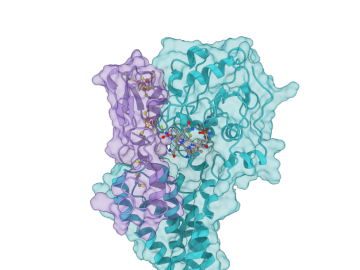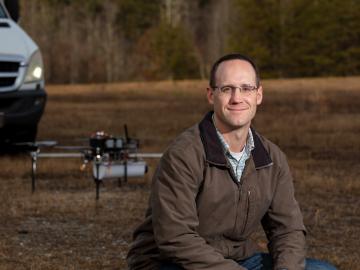
Filter News
Area of Research
- Advanced Manufacturing (4)
- Biological Systems (1)
- Biology and Environment (53)
- Building Technologies (3)
- Computational Biology (2)
- Computational Engineering (3)
- Computer Science (15)
- Electricity and Smart Grid (1)
- Energy Science (90)
- Functional Materials for Energy (1)
- Fusion and Fission (5)
- Fusion Energy (2)
- Isotope Development and Production (1)
- Isotopes (28)
- Materials (46)
- Materials for Computing (11)
- Mathematics (1)
- National Security (36)
- Neutron Science (32)
- Nuclear Science and Technology (11)
- Quantum information Science (6)
- Supercomputing (139)
News Topics
- (-) Biomedical (73)
- (-) Buildings (74)
- (-) Composites (35)
- (-) Computer Science (226)
- (-) Cybersecurity (35)
- (-) High-Performance Computing (130)
- (-) Isotopes (62)
- (-) Space Exploration (26)
- (-) Summit (71)
- 3-D Printing/Advanced Manufacturing (146)
- Advanced Reactors (40)
- Artificial Intelligence (131)
- Big Data (79)
- Bioenergy (112)
- Biology (128)
- Biotechnology (39)
- Chemical Sciences (86)
- Clean Water (33)
- Coronavirus (48)
- Critical Materials (29)
- Education (5)
- Element Discovery (1)
- Emergency (4)
- Energy Storage (114)
- Environment (218)
- Exascale Computing (67)
- Fossil Energy (8)
- Frontier (64)
- Fusion (66)
- Grid (74)
- Hydropower (12)
- Irradiation (3)
- ITER (9)
- Machine Learning (68)
- Materials (157)
- Materials Science (158)
- Mathematics (12)
- Mercury (12)
- Microelectronics (4)
- Microscopy (56)
- Molten Salt (10)
- Nanotechnology (64)
- National Security (86)
- Neutron Science (171)
- Nuclear Energy (122)
- Partnerships (68)
- Physics (69)
- Polymers (35)
- Quantum Computing (53)
- Quantum Science (93)
- Security (31)
- Simulation (65)
- Software (1)
- Statistics (4)
- Transportation (103)
Media Contacts

A team led by ORNL created a computational model of the proteins responsible for the transformation of mercury to toxic methylmercury, marking a step forward in understanding how the reaction occurs and how mercury cycles through the environment.

Horizon31, LLC has exclusively licensed a novel communication system that allows users to reliably operate unmanned vehicles such as drones from anywhere in the world using only an internet connection.

Pick your poison. It can be deadly for good reasons such as protecting crops from harmful insects or fighting parasite infection as medicine — or for evil as a weapon for bioterrorism. Or, in extremely diluted amounts, it can be used to enhance beauty.

Combining expertise in physics, applied math and computing, Oak Ridge National Laboratory scientists are expanding the possibilities for simulating electromagnetic fields that underpin phenomena in materials design and telecommunications.

After its long journey to Mars beginning this summer, NASA’s Perseverance rover will be powered across the planet’s surface in part by plutonium produced at the Department of Energy’s Oak Ridge National Laboratory.

ORNL researchers have developed an intelligent power electronic inverter platform that can connect locally sited energy resources such as solar panels, energy storage and electric vehicles and smoothly interact with the utility power grid.

A team led by Dan Jacobson of Oak Ridge National Laboratory used the Summit supercomputer at ORNL to analyze genes from cells in the lung fluid of nine COVID-19 patients compared with 40 control patients.

From materials science and earth system modeling to quantum information science and cybersecurity, experts in many fields run simulations and conduct experiments to collect the abundance of data necessary for scientific progress.

Five researchers at the Department of Energy’s Oak Ridge National Laboratory have been named ORNL Corporate Fellows in recognition of significant career accomplishments and continued leadership in their scientific fields.

Scientists at ORNL used neutron scattering and supercomputing to better understand how an organic solvent and water work together to break down plant biomass, creating a pathway to significantly improve the production of renewable


